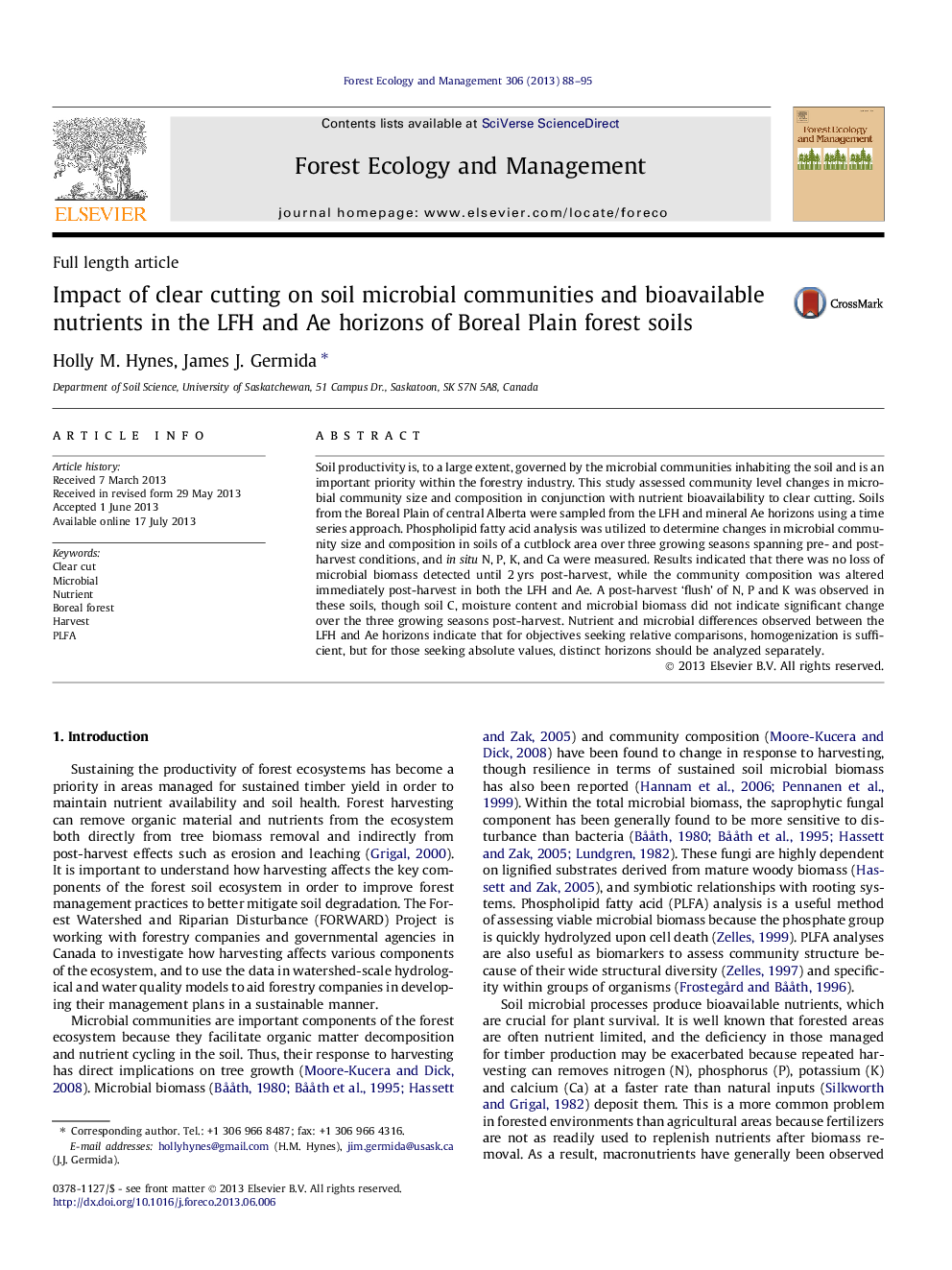| Article ID | Journal | Published Year | Pages | File Type |
|---|---|---|---|---|
| 6544118 | Forest Ecology and Management | 2013 | 8 Pages |
Abstract
Soil productivity is, to a large extent, governed by the microbial communities inhabiting the soil and is an important priority within the forestry industry. This study assessed community level changes in microbial community size and composition in conjunction with nutrient bioavailability to clear cutting. Soils from the Boreal Plain of central Alberta were sampled from the LFH and mineral Ae horizons using a time series approach. Phospholipid fatty acid analysis was utilized to determine changes in microbial community size and composition in soils of a cutblock area over three growing seasons spanning pre- and post-harvest conditions, and in situ N, P, K, and Ca were measured. Results indicated that there was no loss of microbial biomass detected until 2Â yrs post-harvest, while the community composition was altered immediately post-harvest in both the LFH and Ae. A post-harvest 'flush' of N, P and K was observed in these soils, though soil C, moisture content and microbial biomass did not indicate significant change over the three growing seasons post-harvest. Nutrient and microbial differences observed between the LFH and Ae horizons indicate that for objectives seeking relative comparisons, homogenization is sufficient, but for those seeking absolute values, distinct horizons should be analyzed separately.
Related Topics
Life Sciences
Agricultural and Biological Sciences
Ecology, Evolution, Behavior and Systematics
Authors
Holly M. Hynes, James J. Germida,
